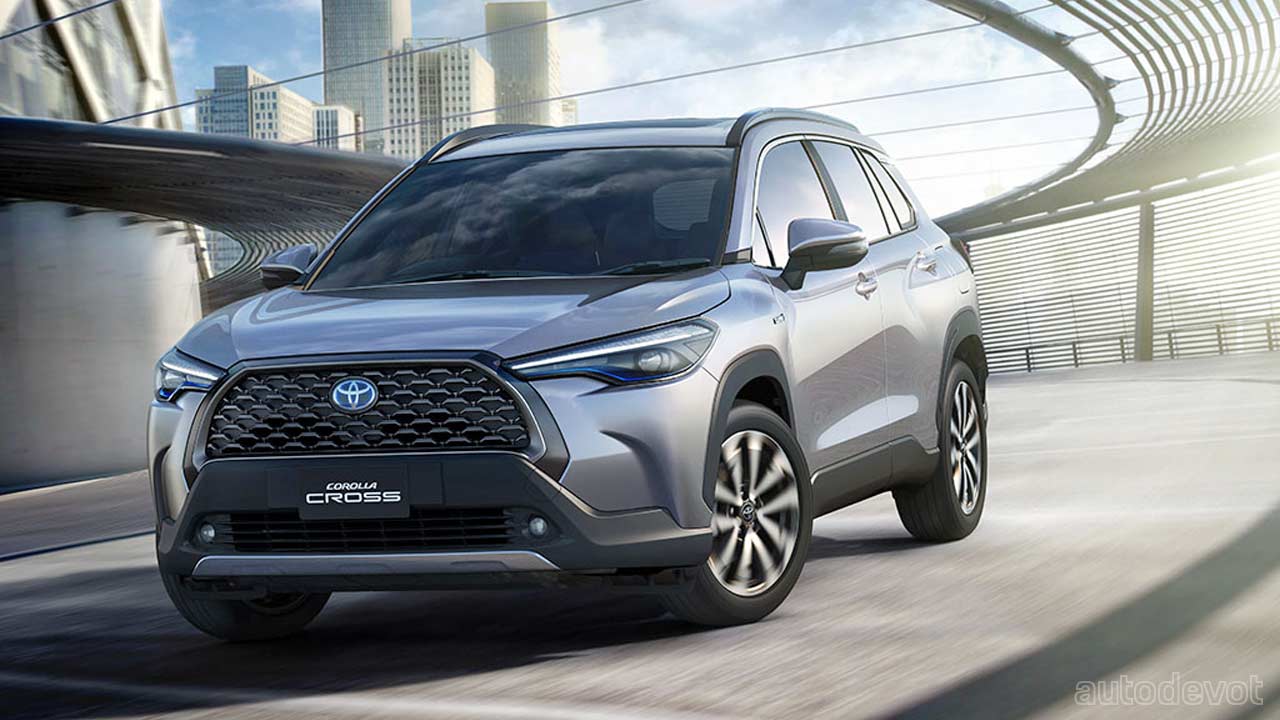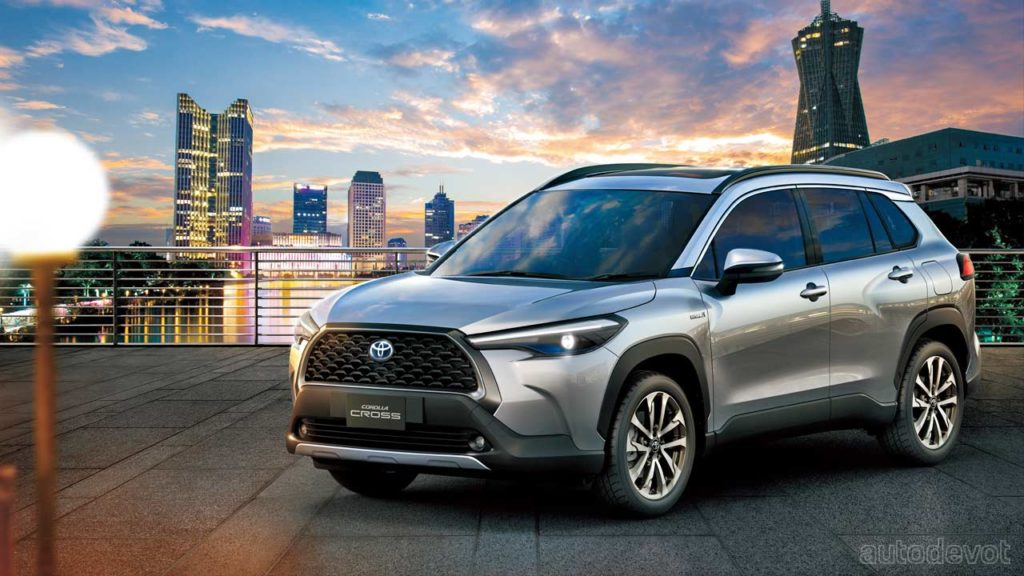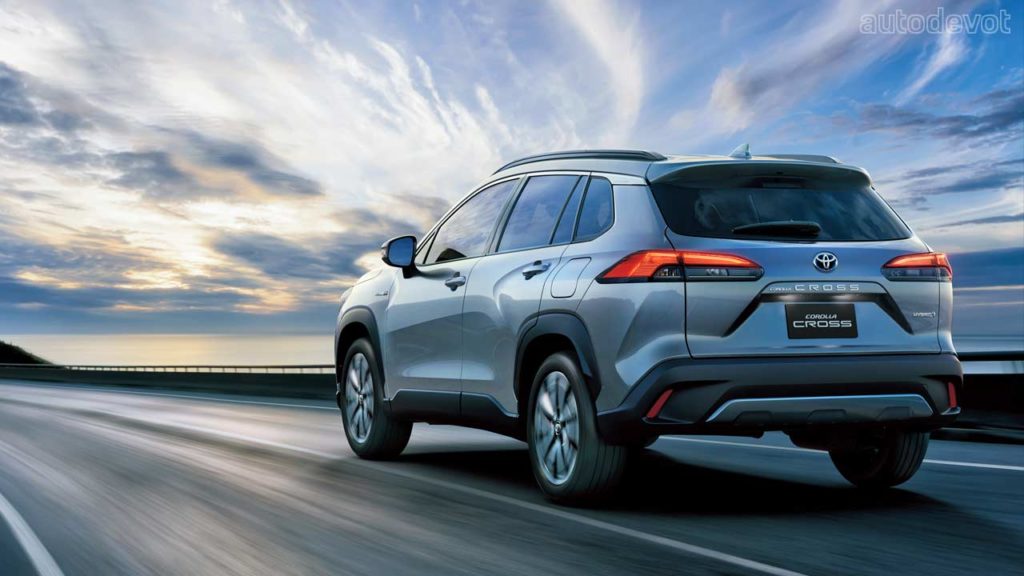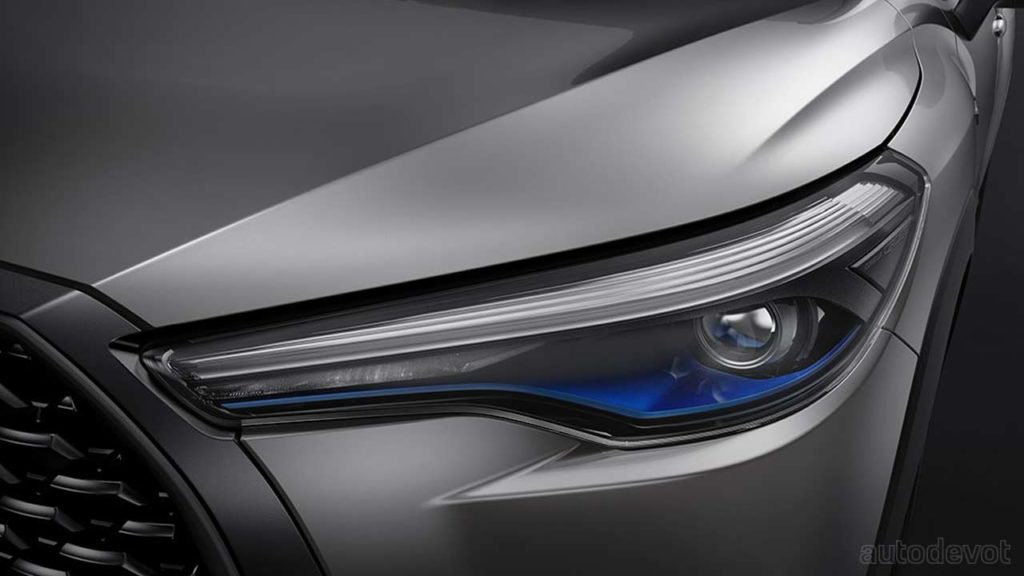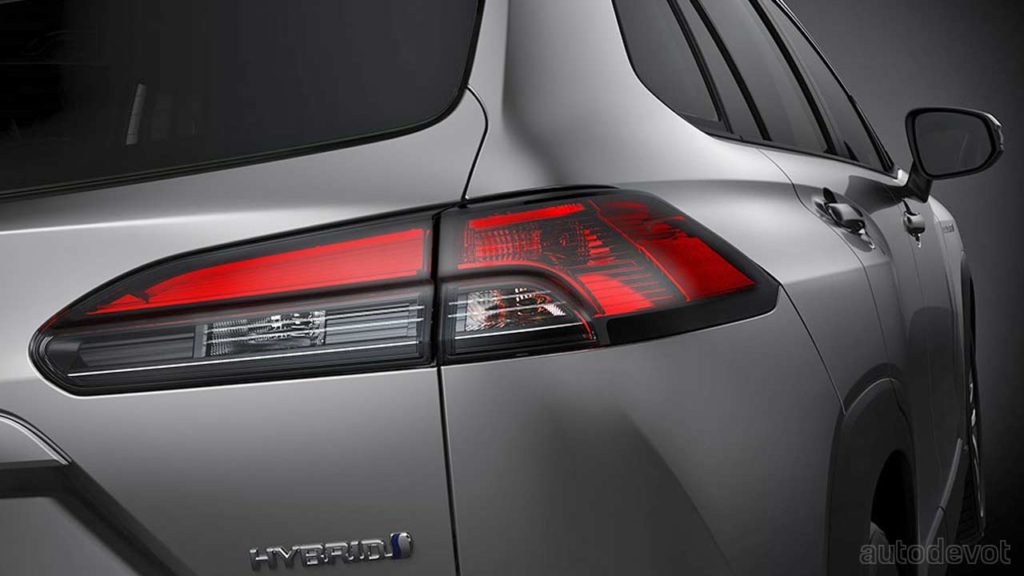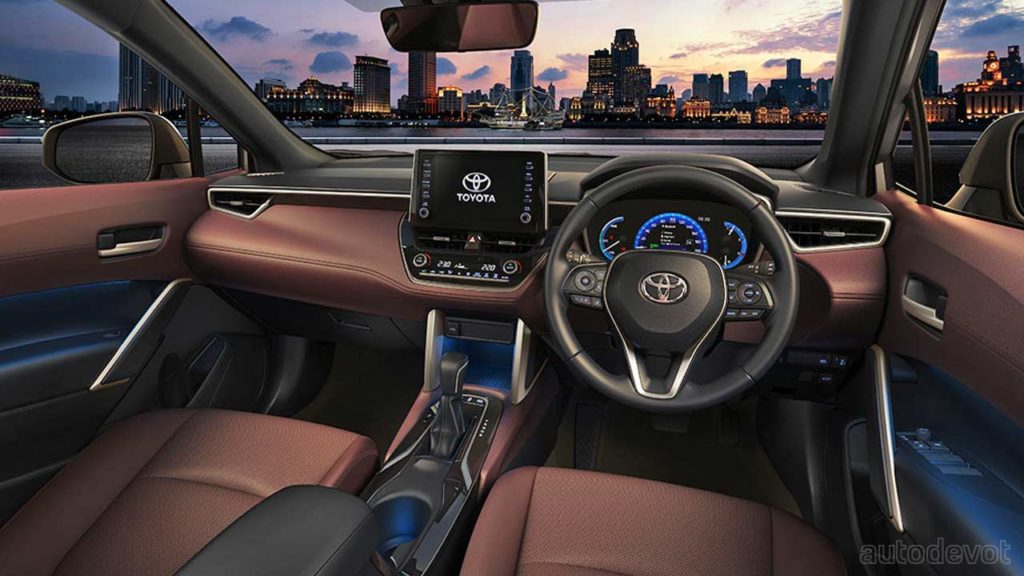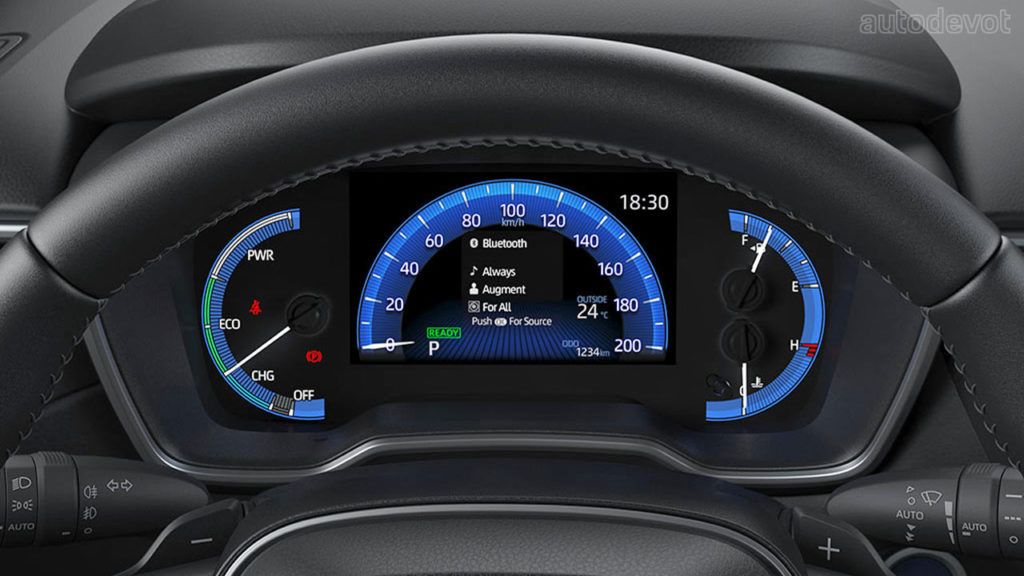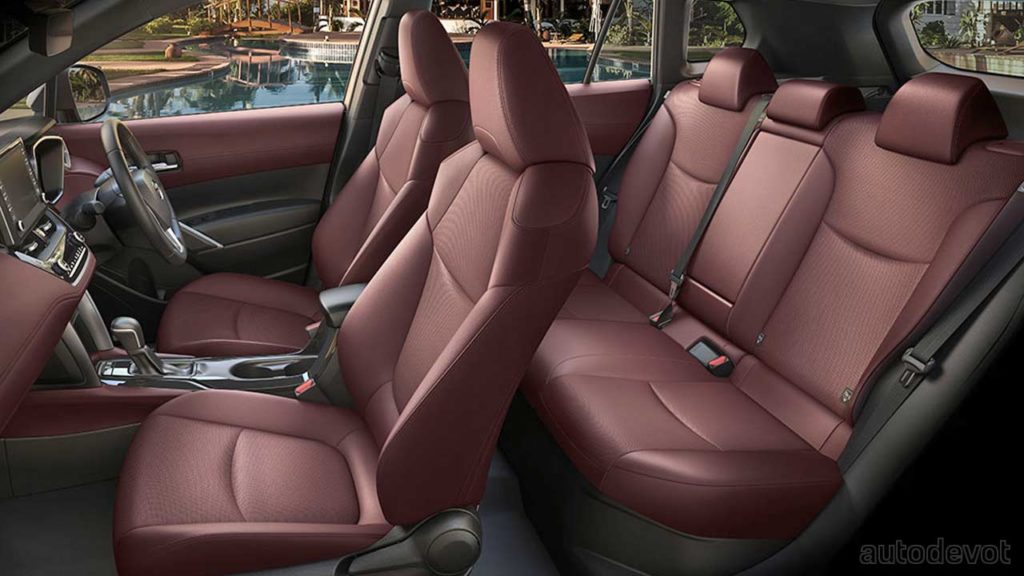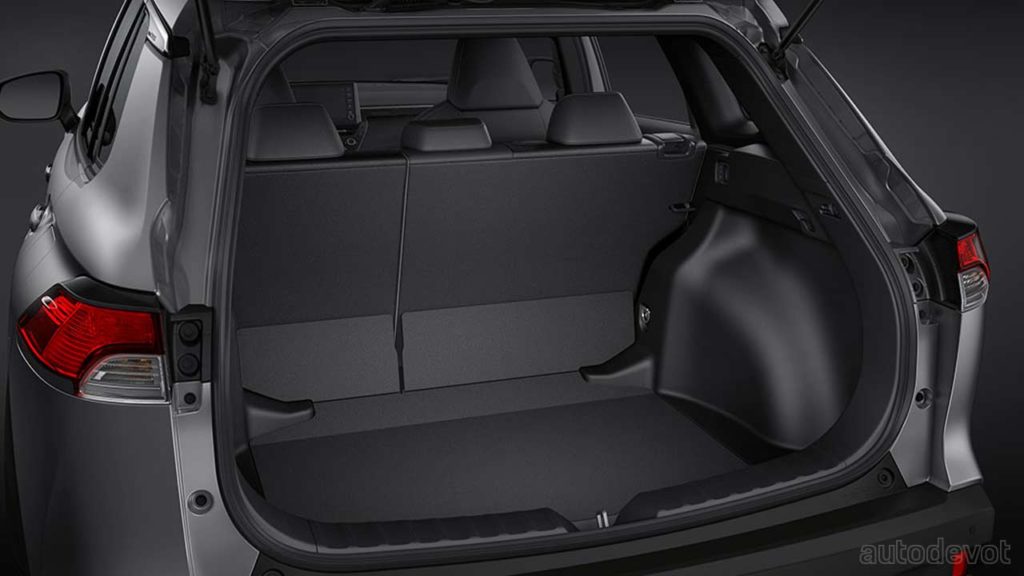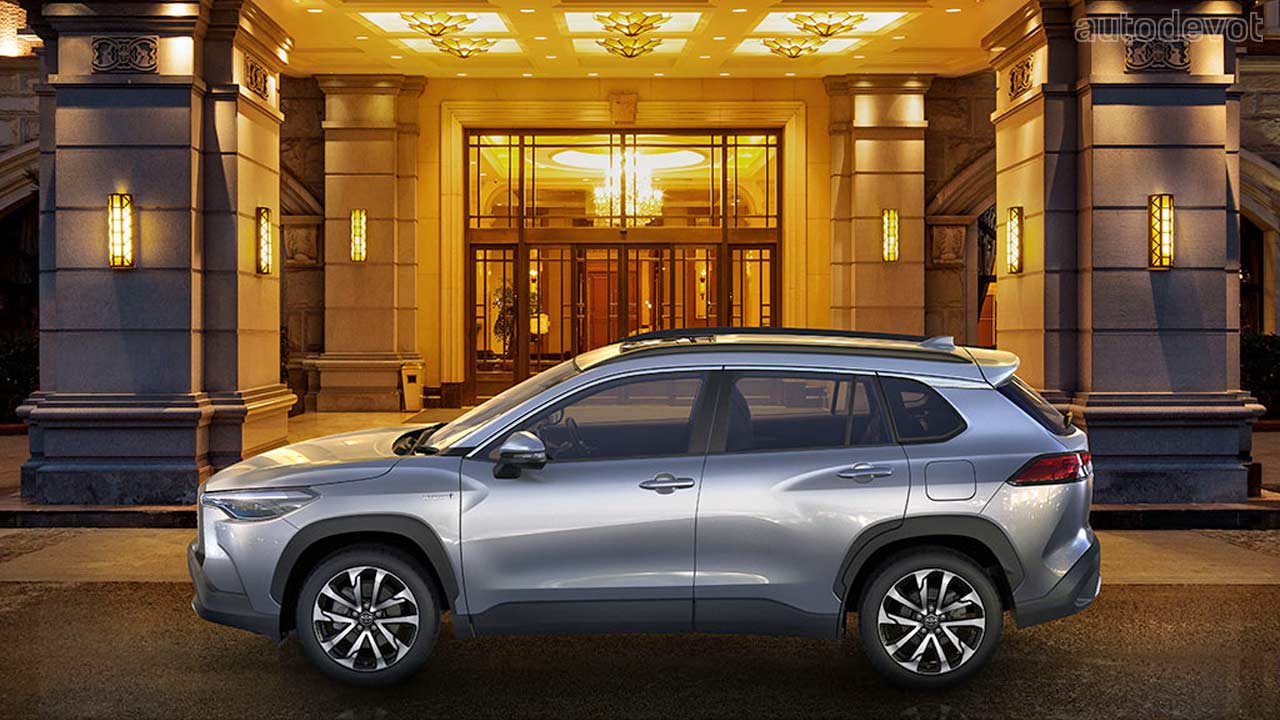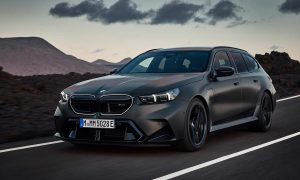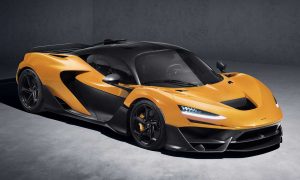Toyota has revealed yet another new crossover because apparently, the world can’t get enough of SUVs. This time, it’s for the Thailand market. Strangely, the ‘Corolla’ nameplate has been used for the first time for an SUV. But hey, if the Yaris can get a Cross and the Mustang a Mach-E, why not Corolla?
Built on the same TNGA (GA-C) platform as the 12th generation Corolla lineup (which includes hatchback, sedan and wagon), the Corolla Cross measures 4,460 mm in length, 1,825 mm in width and 1,620 mm in height. It has a wheelbase of 2,640 mm.
As for the design language, it doesn’t look anything like the other Corolla models. We can see some Highlander cues and a bit of RAV4 here and there, but the Corolla Cross doesn’t look as aggressive and serious as the aforementioned two SUV nameplates and maybe that’s part of the plan. It attempts to look muscular with those shoulders but the design tone is really on the softer side. In my personal opinion, the new Harrier (also sold as Venza) looks more contemporary. But the Corolla Cross will certainly appeal for those who like simple lines.
Exterior equipment includes LED projector headlights, LED fog lights, LED signature for the taillights, electric sunroof, shark fin antenna, and 18-inch alloy wheels. Again, the headlight and the taillight design is completely different from other Corolla models.
However, the dashboard is almost identical to the other Corollas. Features include a 9-inch touchscreen infotainment system, a 7-inch MID, and dual-zone climate control. In addition, Toyota claims a class-leading luggage capacity of 487 liters.
Active safety and driver assistance systems include Pre-Collision System, Lane Departure Alert with Steering Assist, and Dynamic Radar Cruise Control with Lane Tracing Assist. Download the brochure here (Thai).
Powertrains
Moving on to the business end of the story, the Corolla Cross is available both in conventional petrol and petrol-electric hybrid variants. The petrol variant is a 1.8-litre (1,798 cc) 4-cylinder 2ZR-FBE engine, developing 103 kW (140 hp) at 6,000 rpm and 177 Nm (130 lb-ft) of torque at 4,000 rpm. It is paired with a CVT.
The hybrid variant combines a 1.8-litre (1,798 cc) 4-cylinder 2ZR-FXE engine and an electric motor. The ICE develops 72 kW (98 hp) at 5,200 rpm and 142 Nm (105 lb-ft) of torque at 3,600 rpm. The e-motor offers 53 kW (72 hp) and 163 Nm (120 lb-ft) of torque. The system output, however, is 90 kW (122 hp). Transmission here is an e-CVT.
No AWD on offer in either variant.

Leave a Reply
Note: Comments that are unrelated to the post above get automatically filtered into the trash bin.
